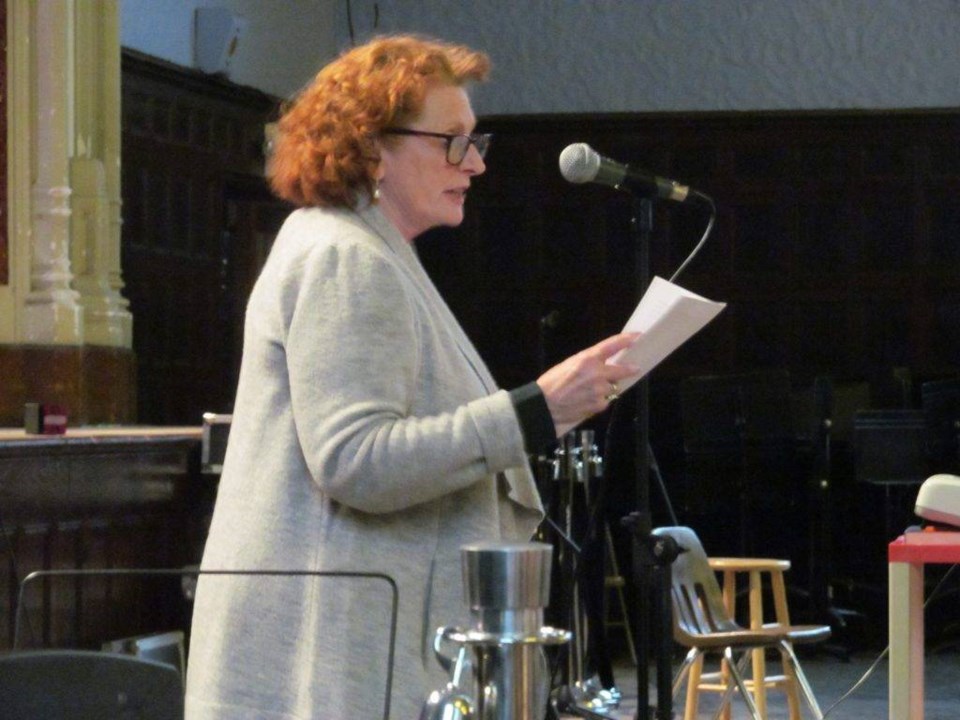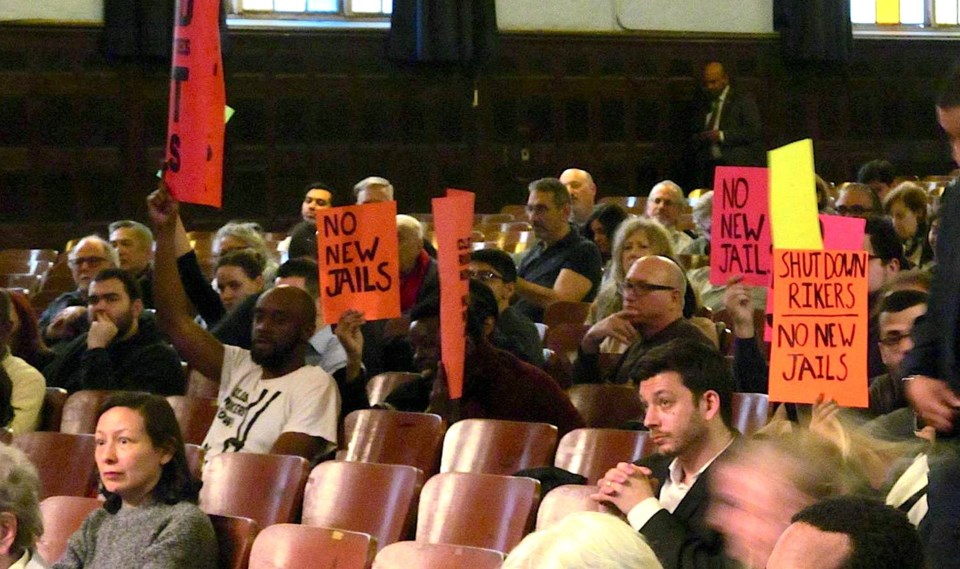In a heated public hearing at Bishop Loughlin Memorial High School Thursday night on the proposed New York City borough-based jail system, Brooklyn residents voiced their dissent the possible expansion of the Atlantic Avenue Detention Center.
In 2017, Mayor DeBlasio committed to closing Rikers by 2027, proposing instead four borough-based jails that would put inmates closer to courthouses, healthcare facilities and their families. The mayor's plan suggests expanding the 800-bed facility on Atlantic Avenue to a 40-story building with a capacity of 1500 beds, adding ground-floor retail and community space, and nearly 300 parking spaces.
At the hearing hosted by Community Board 2, naysayers expressed concerns ranging from the unsightliness of a prison complex to the fear that the detention center's excess capacity would ultimately increase the prison population.
"If you build it, they will fill it," the audience chanted at regular intervals throughout the hearing.
In conjunction with the mayor's plan, advocates have pushed for criminal justice reforms to further drive down the number of inmates on Rikers, leading the state legislature to set a goal of reducing the prison population from 15,000 to 5,000; meanwhile, the city plans to reduce the number to 3,500 inmates by 2027.

"Bail is going to be the biggest driver of reducing the number of people that are sitting on pretrial detention because they can't afford bail," said State Assemblywoman Jo Anne Simon, who was in attendance along with Senator Velmanette Montgomery and Councilmember Stephen Levitt. Roughly 78 percent of those jailed on Rikers can't afford to post bail before their trial.
"A new report today from the Center for Court Innovation revealed that of the nearly 8,000 incarcerated people in NYC jails, 43 percent of the 5000 pretrial detainees would not be in jail had the recently enacted reforms been effected," Simon continued.
Most community members said they support the closure of Rikers but want to limit the expansion of the detention center at 275 Atlantic Avenue. Part of the city's approach to closing Rikers has been to divide its 5,750 beds equally between the four boroughs -- hence the proposed 1,500 beds in Brooklyn.
But community members are clamoring for smaller jails in anticipation of lower incarceration rates; others questioned the need of building new jails despite the new reforms designed to prevent people from being incarcerated.
"Why is that we're not waiting to see what the impact of these reforms are going to before build these new jails," said Albert Saint-Jean of the Black Alliance for Just Immigration. "And: I find it very disingenuous for people to talk about decarceration but at the same time your first go-to is to build jails."
Others suggested that the $10 billion allocated for the expansion of the detention center could be better spent on job training, mental health services and schools.
Darren Mac, who spent 19 months on Rikers, said it's imperative that the new jails are not managed by the same Department of Corrections officers known to use excessive force against inmates.

"The mayor proposed a system that is safer," said Mac. "Conditions are important, but culture is equally important because the culture of violence on Rikers is led by its isolation on an island and decades of mismanagement by the Department of Corrections. Therefore, it is time to end the absolute and unaccountable power the DOC has on these facilities."
Under the Uniform Land Use Review Process, the community boards representing the neighborhoods where the four detention sites are planned have 60 days to host a public hearing and provide recommendations to the city. Brooklyn's CB 2 will continue to discuss the proposed borough-based jail system at its Land Use Committee meeting on Wednesday, April 17, at NYU Tandon School of Engineering.




